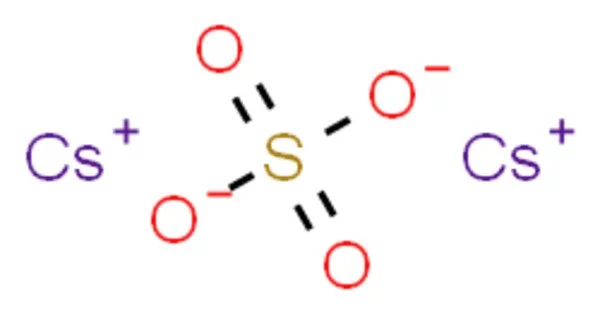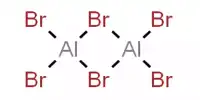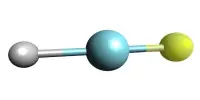Caesium bisulfate (CsHSO4) is an inorganic compound with the formula CsHSO4. The caesium salt of bisulfate is a colorless solid formed by the reaction of Cs2SO4 and H2SO4.
CsHSO4 is a superionic conductor above 141°C. Because of the high activity of protons, rapid ionic conductivity occurs especially in this temperature range. The structure is made up of tetrahedral sulfate centers that bridge caesium ions, according to the results of X-ray crystallography. On sulfate, the proton is associated with oxygen.
Properties
- Chemical formula: CsHO4S
- Molar mass: 229.97 g·mol−1
CsHSO4 goes through three crystalline phases known as phase III, II, and I. At a room temperature of 21 °C, CsHSO4 exists in phase III. The temperature range for phase III is 21 °C to 90 °C, with a transition temperature of 90 °C to 100 °C between phases III and II. Phase II temperatures range from 90°C to 140°C. CsHSO4 undergoes a phase shift from phase II to phase I at 140 °C.
Phase III (21 °C to 90 °C) and Phase II (90 °C to 140 °C) are referred to as the monoclinic phases, in which CsHSO4 exhibits its lowest proton conductivity. As the crystalline structure’s temperature is raised, it will show variations in the unit cell volume and the arrangement of its hydrogen bonds, which will alter the ability of a CsHSO4 crystalline structure to allow the displacement of protons.
The CsHSO4 crystal structure undergoes a structural change from monoclinic phase II to tetragonal phase I at 141°C. Phase I has higher crystal symmetry and larger lattice dimensions. Phase I is noted as the superprotonic phase (strong conducting phase), which triggers an extreme growth in proton conductivity by four orders of magnitude, reaching 10 mS/cm. This increases the conductivity of CsHSO4 tenfold over that of a sodium chloride aqueous solution. The movement of a SO4 tetrahedron in the superprotonic phase causes a disruption in the hydrogen bond network, which speeds up proton transfer. The tetragonal anions present in the structure are responsible for the formation of hydrogen bonds with the moving protons.
Potential applications
The maximum conductivity of pure CsHSO4 is 10 mS/cm, which is too low for practical applications. In composites with SiO2, TiO2, and Al2O3), the proton conductivity below the phase transition temperature is enhanced by a few orders of magnitude.
The term “responsibility” refers to the act of determining whether or not a person is responsible for his or her own actions. EMF measurements in a humidified oxygen concentration cell confirmed CsHSO4’s high ionic nature in its superprotonic phase.
Based on heat rotation, the voltage remained constant for more than 85 hours during the measurement, especially at high temperatures. These findings show that thermal independence from humidity-type environments is possible. Furthermore, the CsHSO4 crystal structure allows for the rapid transport of smaller charged ions, resulting in efficient energy transfer in electrochemical devices.














